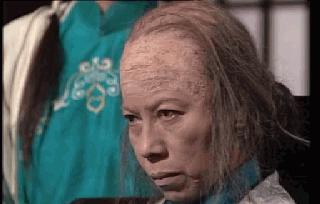Living on Persimmons: A Survival Tale from Ancient China
An analysis of whether a character from Jin Yong’s novel ‘The Return of the Condor Heroes’ could survive for over a decade eating only persimmons from a cliff-side tree, examining the nutritional, agricultural and practical challenges.

Living solely on persimmons for over a decade seems an unlikely feat, even in the world of martial arts fiction. Yet this is exactly what Granny Sun did in Jin Yong’s classic novel “The Return of the Condor Heroes” from China. While at first glance this survival story may seem impossible, a deeper analysis reveals some fascinating insights about both persimmons and human survival.
Traditional persimmon cultivation in China has a rich history dating back thousands of years. The fruit was so vital that ancient Chinese texts referred to persimmon trees as the “iron rice bowl of the orchard,” highlighting their reliability as a food source. However, growing conditions make a significant difference in yields. A well-tended persimmon tree in optimal conditions might produce 1,000-1,500 kg of fruit annually. The cliff-side tree in the story would likely yield far less due to poor soil, limited sunlight, and exposure to wildlife.
The nutritional profile of persimmons presents both advantages and challenges for survival. Fresh persimmons contain 20-36% sugar content, while dried ones reach 55-80%, providing substantial calories. A single dried persimmon can deliver around 300 calories - nearly twice that of rice. However, persimmons lack sufficient protein and fats for a balanced diet. The fruit’s high sugar and water content (over 95% combined) means relying on them alone would lead to severe nutritional deficiencies.
Several practical challenges would complicate long-term persimmon-based survival:
- Persimmons have a limited harvest season (August-September) with flowering in June-July
- Fresh persimmons spoil quickly and require specific conditions for drying
- The humid cave environment described would make preservation extremely difficult
- Wild animals would compete for the fruit
- The tree’s cliff-side location would complicate harvesting
However, in the novel’s martial arts world where practitioners possess supernatural internal energy, some of these challenges might be overcome. The character could potentially use her powers to preserve the fruit, maintain body temperature, and supplement her diet with other cave-dwelling organisms like earthworms for protein.
While surviving solely on cliff-side persimmons stretches credibility even in fiction, the scenario does highlight fascinating aspects of traditional Chinese agriculture and the remarkable nutritional density of persimmons. The fruit’s historical importance as a famine food and military provision suggests that while it couldn’t sustain someone alone, it could indeed play a vital role in survival situations.